According to the ASPCA, the different types of aggressive dogs are the number one problem dog owners face. Aggression instills fear and can turn even the tiny chihuahua into scary dogs. Many owners, unable to manage the behavior, find themselves researching were to surrender their pets.
A dog that seems naturally aggressive is usually following a sequence of behaviors. Often this represents an intra-household temperament, where the dog is sending a message. Whether it’s towards strangers or an animal, the dog wants to indicate something’s amiss. You represent prey, a territorial invader, or other action.
The signs of idiopathic behavior in the most aggressive dogs include:
- Becoming rigid and still
- Growling, snapping or snarling
- Presenting their teeth
- Threatening guttural barks
- Lunging or charging at a person or animal
- Trying to control the other person or animal with significant pressure (such as refusing to let them pass)
- Dog punches with their nose (called a “muzzle punch”)
- Warning nips that leave no mark
- Bite that leaves a bruise or puncture wounds
- Repeated, consecutive bites
- Bites and shaking
What Are the Major Types of Aggression in Dogs?
Most aggressive dogs exhibit common forms of body language that are threatening. For a lot of dogs, aggression is a natural form of communication. But the behavior’s also categorized as problematic and undesirable in the different types of aggressive dogs.
Signs of aggressive behavior include:
- Staring
- Barking
- Growling
- Snarling
- Snapping
- Biting
- Lunging
A lot of this behavior is idiopathic. Predatory aggression is grounded as much in fear or anxiety as an emotional reaction motivated by the brain. When left untethered, the situation becomes unmanageable and now pet owners need to know where to surrender their animals.
There are different contexts in which the behavior happens. Ultimately, the dog wants to send a message:
- Increase your distance
- Be forwarned
- You are prey
Here are primary forms of naturally aggressive behavior in scary dogs.
- Territorial: A dog can feel its turf threatened by a person or animal it’s unfamiliar with. This is a control related temperament and usually directed towards strangers on the dog owner’s property. It can also involve roaming squirrels or cats.
- Predatory: Predatory aggression is usually directed at another animal, though occasionally the target can be a human. It entails seeing another creature as prey for hunting, capturing and potentially consuming. Predatory agression is often silent with the attack uninhibited and damaging.
- Redirection or Frustration: Incidents of frustration or redirection are often triggered by emotional arousal. A dog unable to direct its aggression toward its chosen victim may attack an object, person, or other animal. Usually, it’s someone or something that comes between the dog and its intended prey.
- Social Conflict: The complexity of a social conflict-related condition entails an intra-household struggle in a canine toward someone they’re unfamiliar with. An unexpected interaction may ignite anger and behavior.
- Sexual: The interaction involved with mating often turns a dog aggressive. Male dogs may compete for a female. Even the female’s known to fight for a male.
- Possessive: Resource guarding is directed at a person or animal that gives the impression something the dog values is at risk. (One major example of this is in not disturbing dogs while they eat. Many dogs will snap or bite out of fear you’re looking to take their food.)
- Disease: Infectious and non-infectious diseases can spark aggression in an animal. Rabies is an excellent example.
- Protective or Maternal: Females are more likely to exhibit maternal/protective aggression, perceiving a threat to offspring. In other cases, we train dogs to be aggressive for purposes of protection and security.
- Fear or Anxiety: A dog that bites feels cornered, trapped, or approached without permission. The act can result in an unpleasant outcome.
- Irritable or Pain-Related: A dog in pain or discomfort can turn aggressive.
10 Types of Aggressive Dogs
From a dog that bites to scary dogs that are territorial, canines exhibit control-related behavior that invokes fear and can potentially lead to injury. But some animals have a greater temperament for the behavior than others. Here’s a list of 10 different types of aggressive dogs.
1. American Staffordshire Terrier
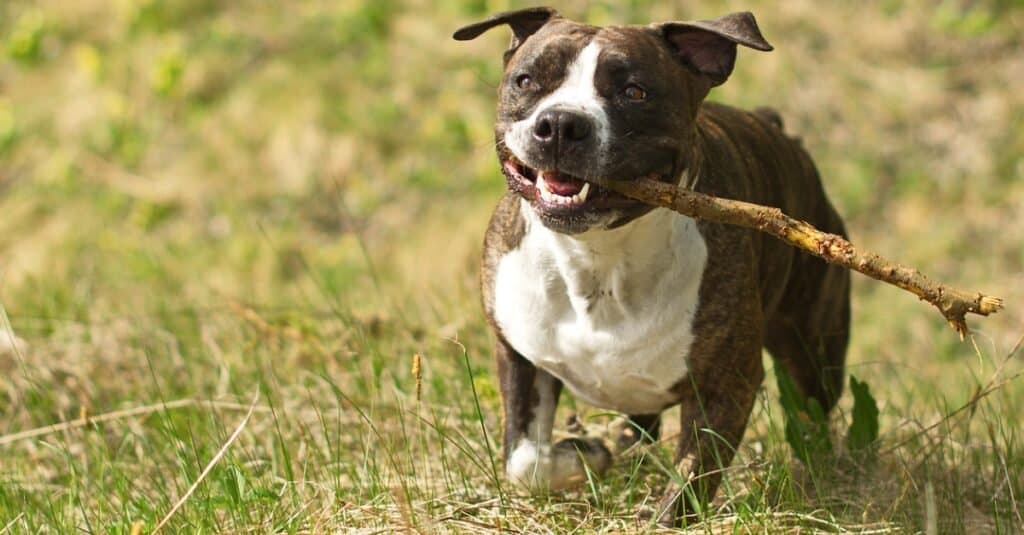
©iStock.com/Bargais
American Staffordshire Terriers are called pit bulls because of their use as fighting dogs… in pits. Resource guarding is a strong characteristic, but typically these are loving and affectionate dogs. It’s the aggressive training to fight that taints behavior. But even the worst fighters have gotten dog training and become trustworthy pets.
2. German Shepherd

©iStock.com/diego_cervo
German Shepherds are one of the most popular breeds in the world. They’re put to work as guides, guard dogs, police dogs, and search-and-rescue animals. Their intra-household intensity and stature easily come across as intimidating. German Shepherds have a naturally protective temperament which may turn aggressive. Early socialization can help with this.
3. Rottweiler

©iStock.com/Meagan Jenkins
With stock, thick frames, and topping out at 150 pounds, the affectionate Rottweiler is a massive threat. Strong as it gets, this breed once pulled carts filled with butchered meat. Naturally aggressive and extremely territorial, many owners have taken advantage of those traits, creating attack dogs. Without improper dog training, the Rottweiler is a docile and loving family pet.
4. Cane Corso
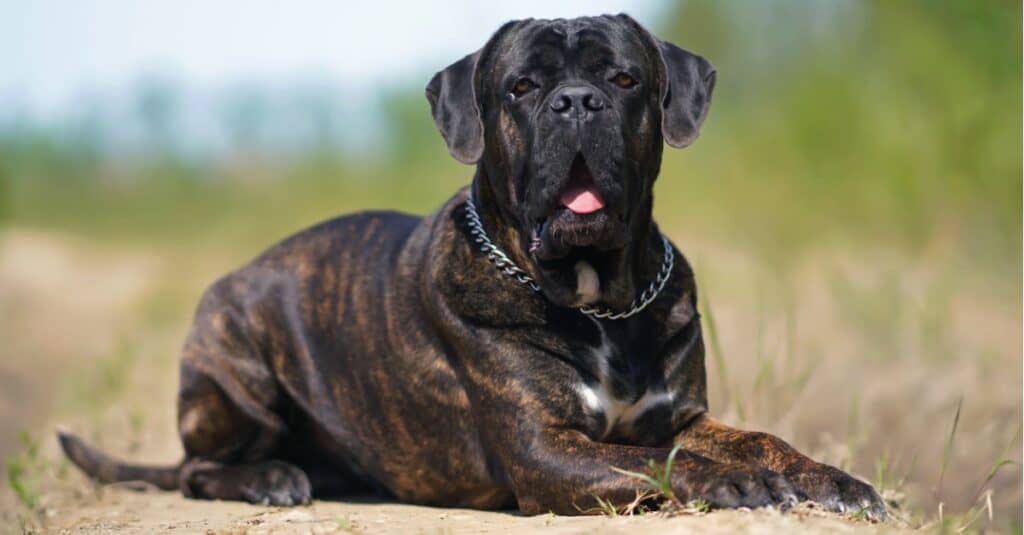
©Eudyptula/Shutterstock.com
A giant mastiff, the Italian-bred Cane Corso guards property and hunts big game. It’s extremely protective and a socialized pet that still shows a lack of comfort towards strangers. The Cane Corso needs a consistent and firm owner, and early dog training. In many cases, this dog cannot share a home with smaller animals or even be around neighbors or roaming animals.
5. Chow Chow
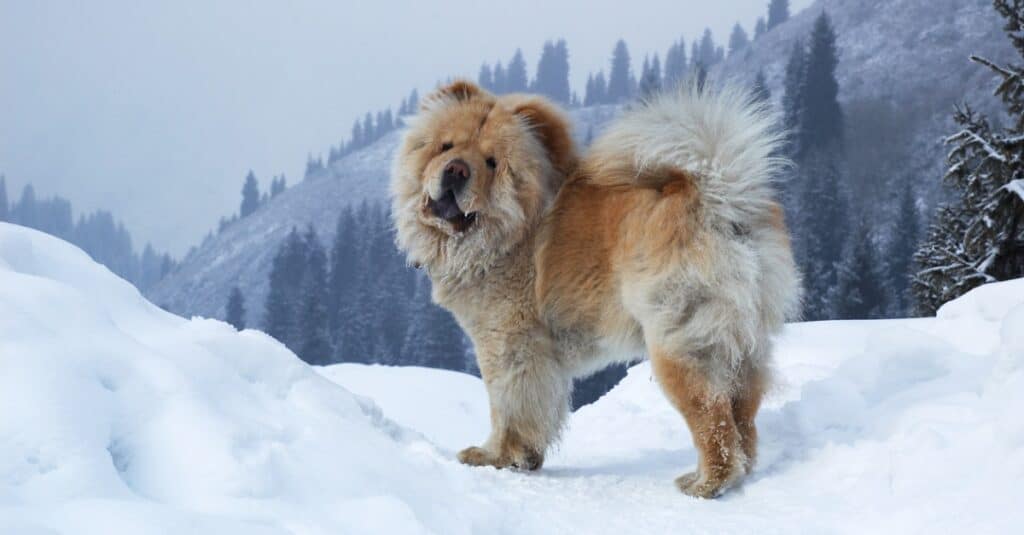
©Maxim Petrichuk/Shutterstock.com
Chow Chows are extremely territorial. They hunt, herd, guard, and show exceptional devotion to their family. Early socialization and dog training are critical if you want this fluffy pooch as a pet. Otherwise, you may end up with an idiopathic animal that shows signs of bad behavior.
6. Siberian Husky
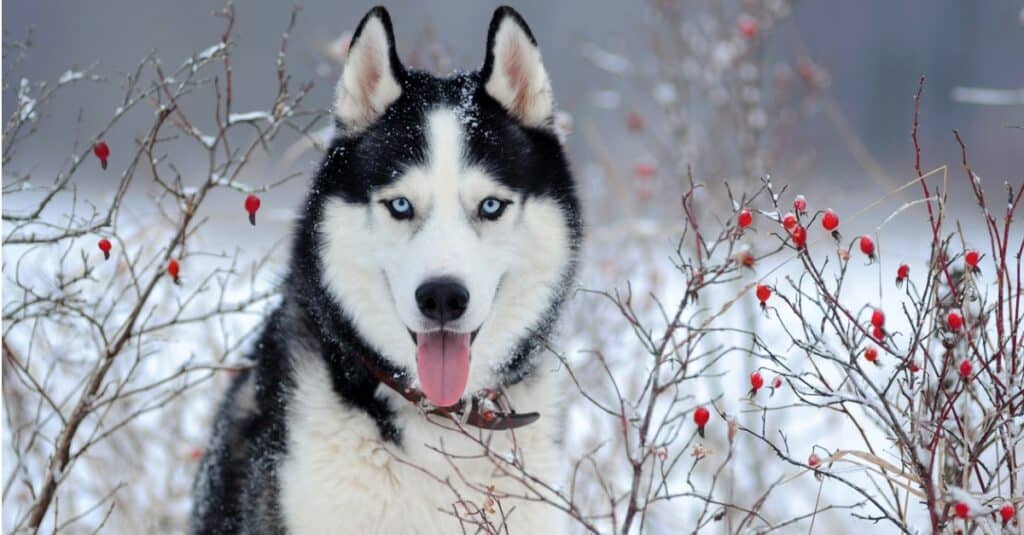
©iStock.com/format35
Famous for sled racing, Siberian Huskies have endless energy and brilliant intelligence. They require regular mental and physical stimulation. Frustration can lead to aggressive behavior. They’re capable of going after small neighborhood animals and household pets. The dog has an unpredictable personality and requires monitoring around children and strangers.
7. Doberman Pinschers
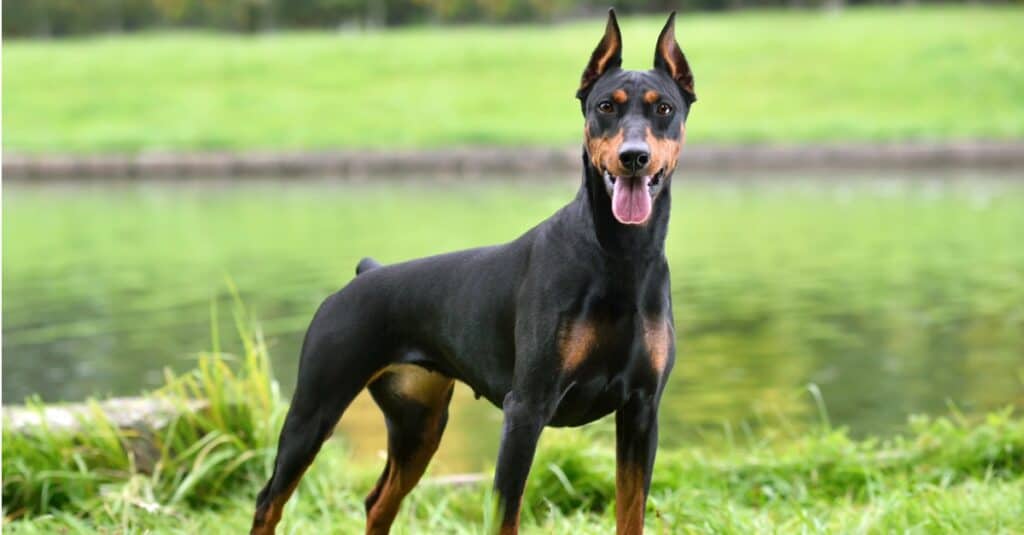
©eAlisa/Shutterstock.com
The Doberman is one of the most recognized dogs in the world. Their intellect is keen and they’re affectionate and friendly when dog training gets implemented early. Untrained animals are usually highly sensitive and suspicious towards strangers. These dogs exhibit natural control-related and resource guarding behavior which can lead to risky situations. The behavior needs tempering with common sense that comes from training.
8. Chihuahua
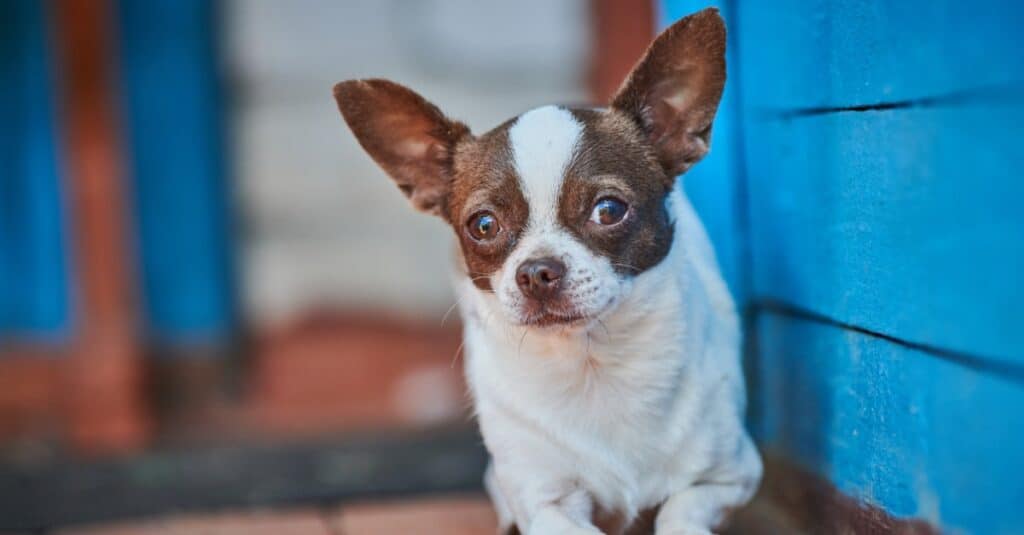
©iStock.com/TRAVELARIUM
The Chihuahua is often a pampered toy dog, but trust they have big, aggressive personalities. And like a dog that bites, they have no problem going after a threat. They are not a choice for families with small children as the dogs do not tolerate adventurous behavior. The animal famously bonds with a single family member and is ready to die for them, even against vastly larger animals.
9. Akita
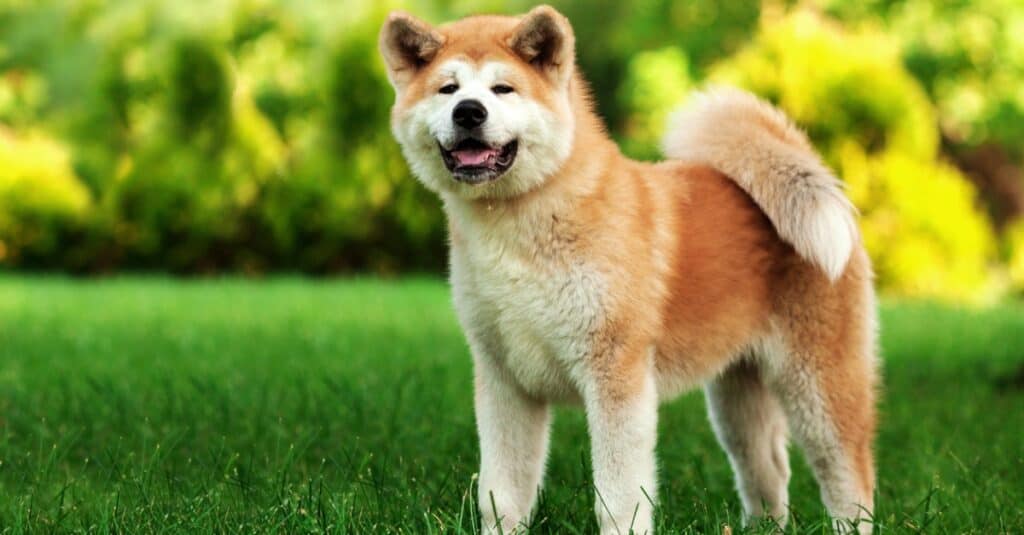
©TatyanaPanova/Shutterstock.com
The Akita is a Japanese breed. Dog training leans traditionally toward guard or police work. They are naturally aggressive towards other dogs and are wary of strangers. Dog training at an early age is critical, helping them to stop seeing animals and people as threats.
10. Perro de Presa Canario
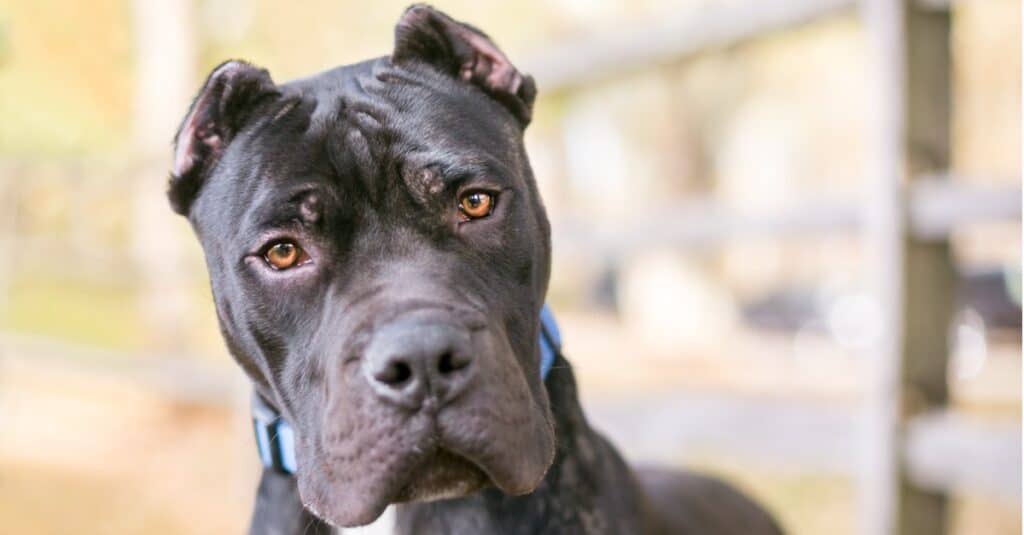
©iStock.com/Mary Swift
Borne out of the Canary Islands for herding, the giant Perro de Presa Canario was bred to meet threats. With its control-related training, the pet needs the hand of a firm and experienced dog owner. Smart owners keep a strong six-foot fence to prevent the animal from roaming the neighborhood. With the Perro de Presa Canario, socialization and training are not only imperative, they have to be constant.
Dog Training
Training will be critical to correcting naturally aggressive behavior. Keep track of when the animal shows aggression as well as the circumstances. Later, the information will be influential in looking at the underlying cause of the behavior. The info will also be important in deciding your next step as you’ll have a record to show the vet or trainer.
What You Can Do
The different types of aggressive dogs can lead to dangerous scenarios. Below are ways to manage canine aggression.
- Relax: Dogs feed off of our anxiety. Remain calm and firm. You don’t want to stress yourself or the dog.
- Assess: Frustration might be driving your dog. It may need more exercise, socialization or time outdoors. Pay attention to the animal’s temperament to help deflate signs of aggression.
- No Bullying: A lot of aggression in dogs comes from irresponsible training which often includes taunting and punishment. Avoid putting the dog on trial. Be fair and firm, but not overly angry or punitive.
- Pick Carefully: Many newcomers don’t do research and end up with a breed they didn’t prepare for. This is unfair to the dog and the family.
- Speak With a Vet: Medical conditions, such as pain related injury, can link back to bad behavior.
- Seek Help: Dog training will be instrumental in correcting animal temperament. A certified trainer can alleviate stress and potential risk.
We’d like to prevent owners from needing to find out where to surrender their beloved pets. Depending on the breed and each dog’s unique temperament, there may be different approaches for managing aggressive behavior. Alongside the help of a professional, you’ll need time, consistency, and patience.
The photo featured at the top of this post is © TatyanaPanova/Shutterstock.com
Ready to discover the top 10 cutest dog breeds in the entire world?
How about the fastest dogs, the largest dogs and those that are -- quite frankly -- just the kindest dogs on the planet? Each day, AZ Animals sends out lists just like this to our thousands of email subscribers. And the best part? It's FREE. Join today by entering your email below.
Thank you for reading! Have some feedback for us? Contact the AZ Animals editorial team.






